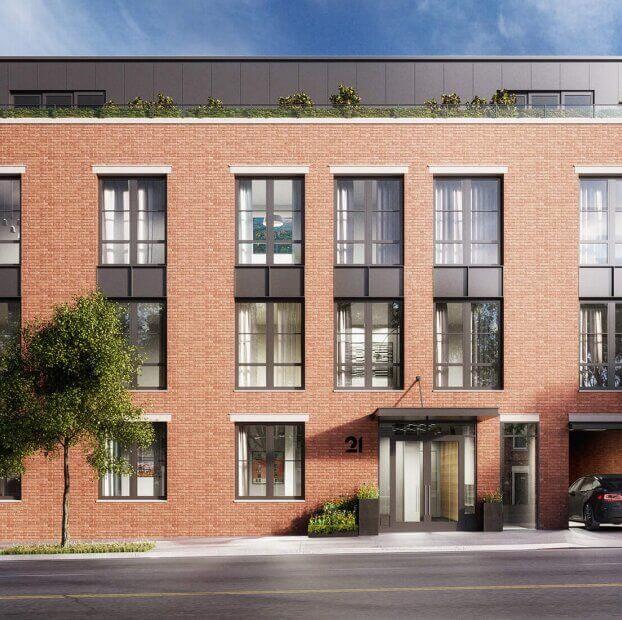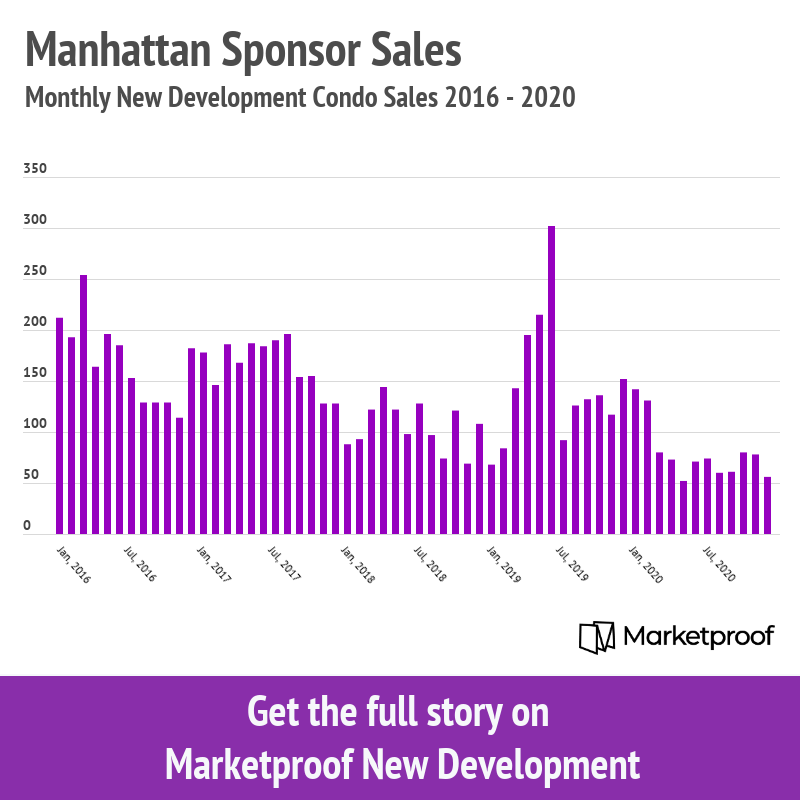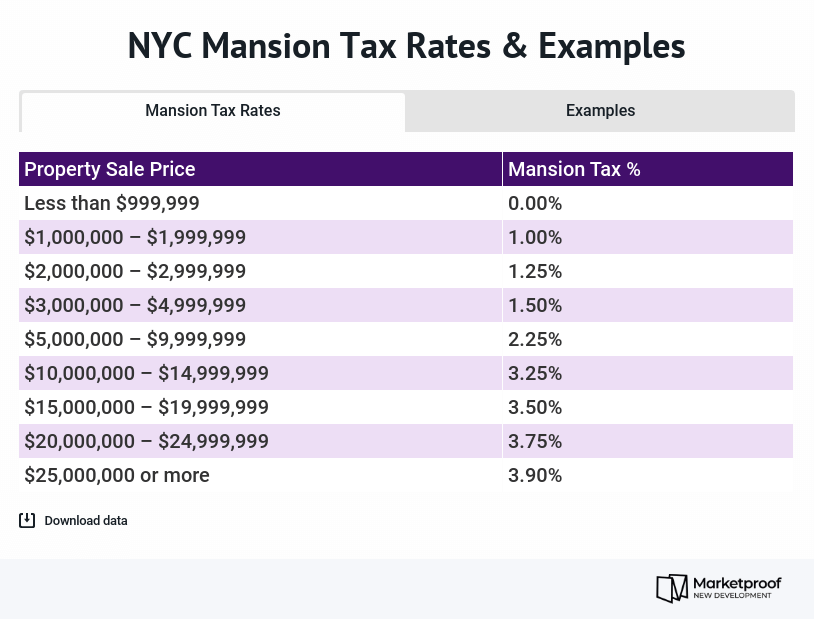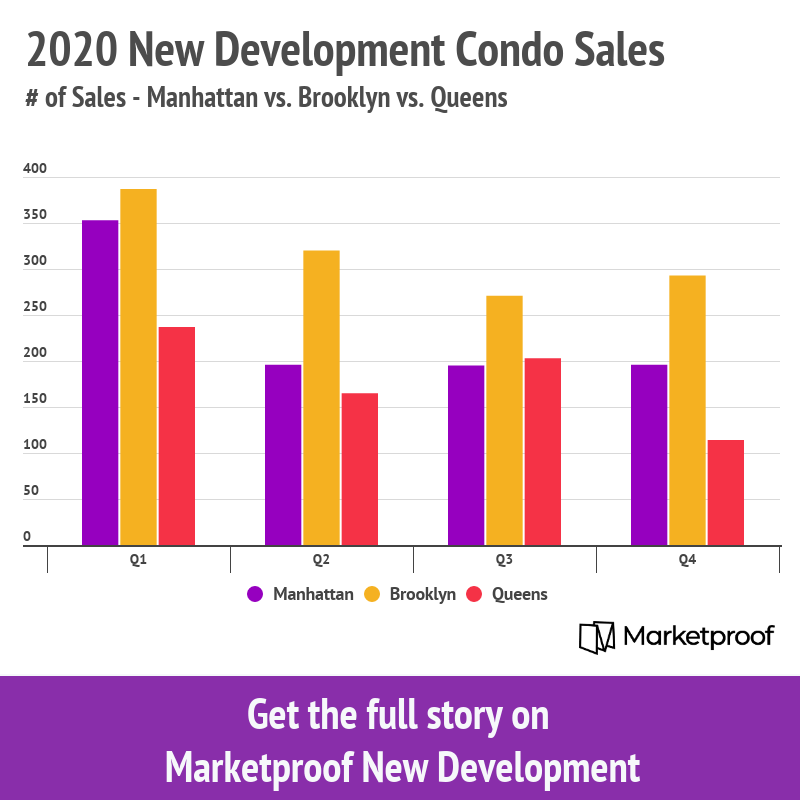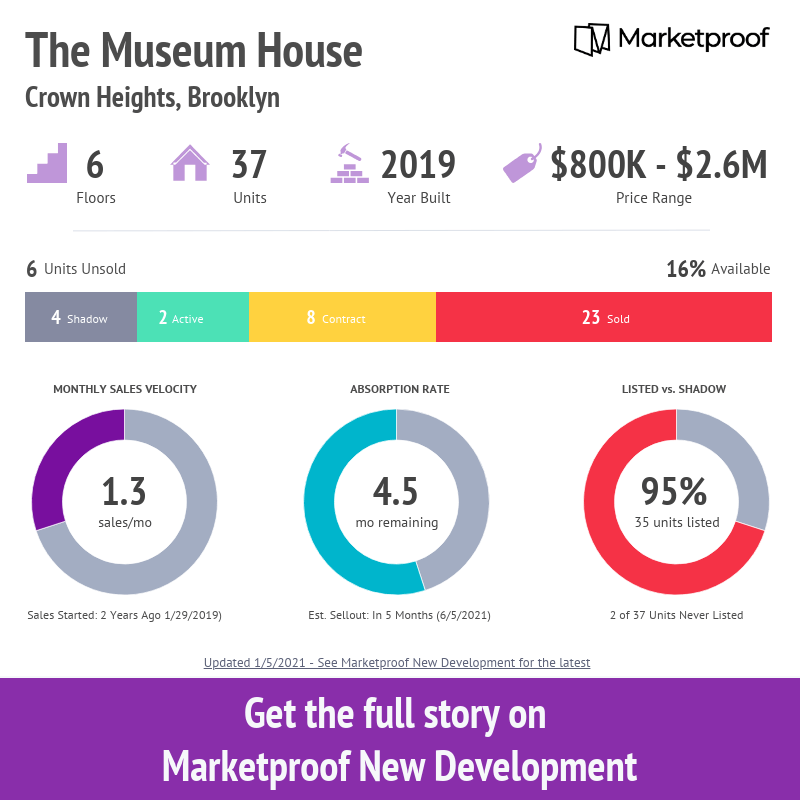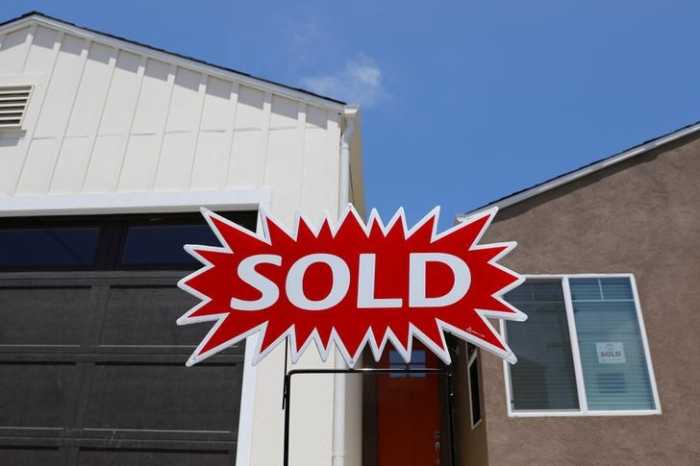New Brooklyn condos outsold those in Manhattan this year. The surprising reversal reflects a long-term shift in the balance of real estate power among New York City boroughs. That’s according to a new report by NYC real estate platform Marketproof.
Three trends have shifted the market over the course of the last four years:
- International buyers looked elsewhere following the 2016 US election,
- a new mansion tax went into effect in July 2019, imposing progressively higher tax rates as sales prices climb, and
- COVID temporarily shut down the market and made Manhattan less desirable in 2020.
In the aftermath of these events, new Brooklyn condos outsold Manhattan in all four quarters in 2020, but the gap widened considerably in Q3 and then again in Q4, when Brooklyn new developments sold nearly 1.5x Manhattan’s, according to Marketproof New Development data. This shows that COVID widened a gap between Brooklyn and Manhattan’s new condo markets that had already materialized in Q1.
To be sure, COVID also adversely affected the Brooklyn market in absolute terms. But the borough did not suffer losses nearly as steep as Manhattan’s or even Queens’.
You can see the hits Manhattan has taken over the past few years in the below chart, which shows the number of Manhattan new condo sales per month dating back to January 2016.
The first steep decline hit in September 2017, six months after President Trump’s inauguration. According to NAR, nationwide, the amount of money international buyers spent on residential US real estate dipped 21% from 2017 to 2018 and 36% the following year.
The 2019 mansion tax supplied another shock in mid-2019. Buyers raced to purchase costly Manhattan inventory in May and June 2019 before the progressive tax took effect, ratcheting up taxes on purchases above $1 million. In July, sales plummeted.
Finally, COVID further shrank the market for Manhattan condos, which are on average several times more expensive than those in Brooklyn and Queens. This year, the number of Manhattan new development unit sales declined from over 350 in Q1 to less than 200 in each of the remaining three quarters.
Also striking is that while the number of units sold in Manhattan from Q1 to Q2-4 plummeted from 353 to fewer than 200, the price of the average deal remained steady at $3.7-4 million in Q1, Q2, and Q4. By contrast, the average price of Brooklyn deals held level at about $1 million. Queens deals averaged $796,000 to $866,000.
This underscores why it has been so difficult for Manhattan developers to close on new condos: They just do not have the sub-$1 million inventory Brooklyn and Queens developers can move in a tough market for sponsors.
Manhattan’s loss is Brooklyn’s gain
Buyers are flocking from Manhattan’s costlier digs to Brooklyn and Queens. Instead of foreign buyers driving the market by closing on $4+ million apartments, local buyers are increasingly setting the pace for developers with $1 million purchases in smaller buildings.
While Brooklyn’s overall condo sales trailed Manhattan’s by 7%, the borough sold 35% more units than Manhattan in new developments. New condo sales in Queens reached 76% of new condo sales in Manhattan.
Including listed and shadow inventory, Manhattan sponsors have 7,600 newly developed condos on their hands. Brooklyn has 3,690. At the current pace at which condos in each borough are selling, it will take Manhattan eight years to unload its current inventory. It will take Brooklyn four years and Queens just over three.
Brooklyn and Queens standouts
Brooklyn sales strength primarily rested on smaller buildings in neighborhoods that have seen success for more than a decade, including Bedford Stuyvesant, Crown Heights, Bushwick, East Williamsburg, and Greenpoint.
Consider 21 Powers Street in East Williamsburg. The new development has sold 12 of its 14 units since sales began in September 2018. All sold for between $789,000 and $1.74 million. The building offers eight one-bedrooms, and its six two-bedrooms come with the modest average size of 1,087 sf. It effectively targets the kind of buyer driving today’s market.
Two other Brooklyn success stories are Museum House in Crown Heights and 813 Jefferson Avenue in Bedford Stuyvesant, both home to modest condos in popular but still up-and-coming neighborhoods.
In Queens, Galerie at 22-18 Jackson Avenue in Long Island City is a standout. Sales began in January 2018. Since then, the building has sold 136 of its 182 units, or 75%. Many of these sold for $1 million or less, and sales start as low as $575,000.
Finally, Murray Hill’s Changan Tower closed 86% of its 22 units in 2020 alone. The Queens condo includes 22 two-bedrooms with an average size of 968 sf. It has sold units for between $350,000 and $640,000.
Bottom line
While COVID partially explains the relative shift in popularity from Manhattan to Brooklyn and Queens, it would be unwise to view the latter’s emerging strength relative to Manhattan as a passing, COVID-specific trend.
This multi-year trend is likely to endure, even if a new administration and COVID vaccines slow the rate of change. The balance of real estate power in NYC is shifting among the boroughs.
Disclosure: Marketproof powers the real estate listings for Brownstoner, a publication of Schneps Media, which is the parent company of amNewYork Metro.



